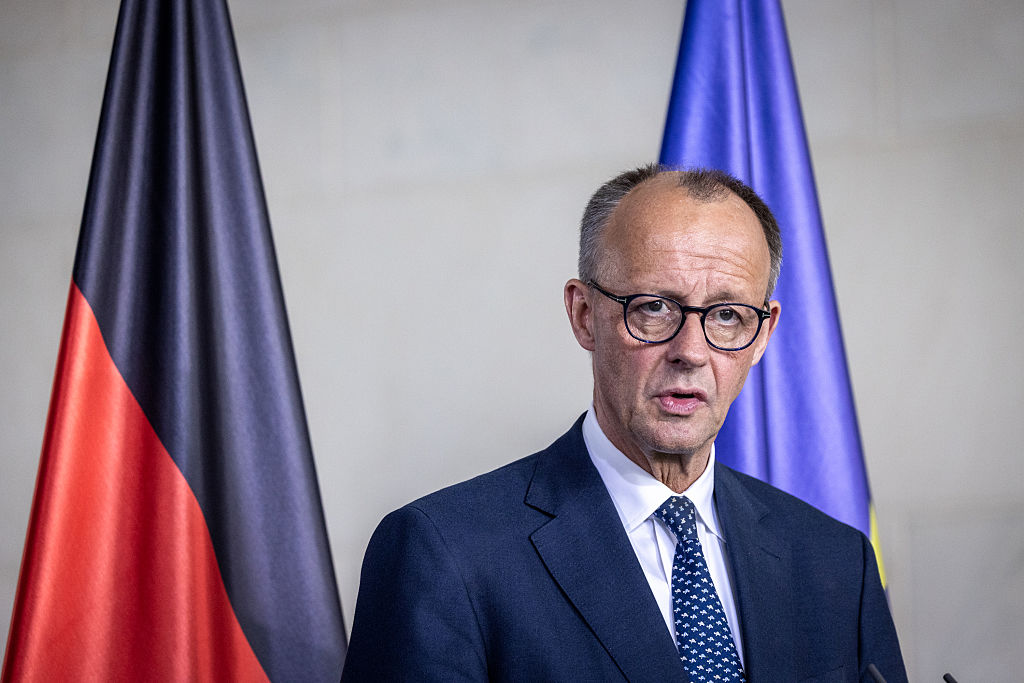For decades, some in Europe talked up the need for “collective European defense,” a policy to sharply reduce dependence on Washington for military protection. The debate never got far because Britain and Germany saw no reason to jeopardize transatlantic ties with a drive for security independence. When Russia launched a full-on invasion of Ukraine in 2022, it quickly became clear that Europe’s dependence on America for military muscle was deeper than ever.
[time-brightcove not-tgx=”true”]
Then Donald Trump returned to the Oval Office, confronting European leaders with the reality that his commitment to Europe had become an open question—especially as war raged in Ukraine. Earlier this year, the center-right CDU/CSU won federal elections in Germany, elevating Friedrich Merz to Chancellor. Merz wasted no time in trumpeting a plan to dramatically boost Germany’s role in Europe’s defense.
In May, Germany’s Foreign Minister pledged that Germany would spend 5% of GDP on defense, a demand Trump has made several times, and which NATO Secretary-General Mark Rutte has echoed (the U.S. spends 3.4%). Germany is the second NATO member, after Poland, to back this plan, and Merz has joined France, the U.K., and Poland in a push to bring Russia to peace talks with Ukraine.
But Merz isn’t just bowing to demands from Washington. In his first major policy speech to the Bundestag on May 14, he pledged that Germany’s military would be the “strongest conventional army in Europe,” a breathtaking promise for anyone old enough to remember the days when heavy military investment in post-reunification Germany was politically taboo. Merz will push to increase troop levels from the current 182,000 active-duty soldiers to as many as 240,000 by 2031 (most likely by reintroducing the draft). Germany will also replace aging aircraft, tanks, and ships. The rest will go toward defense-related infrastructure. Even if Merz—whose coalition partner, the Social Democrats, is notoriously reluctant to fully commit to defense—can’t keep all of his promises, Germany will be a different kind of military player within a few years.
This is landmark news for Europe’s security. At the NATO summit in June, leaders are expected to approve a step-up in alliance-wide defense spending from 2% to 3.5%. A second commitment to 1.5% on defense-related infrastructure could bring the total figure to 5%. By committing to 5% and encouraging others to do the same, Germany’s plan bolsters NATO’s capacity without forcing E.U. members still struggling to reach 2% to make promises they can’t afford to keep. It’s also a win for Ukraine, which can now hope that smoother relations between the U.S. President and European leaders will lower the risk that Trump entirely abandons U.S. support for Ukraine’s war effort.
But it’s an even bigger win for Trump, who for many years has demanded to know why U.S. soldiers and taxpayers remain on the hook for protecting Europe 80 years after the end of World War II. Trump has claimed that his pressure on Europeans to “do more or else” has strengthened both the U.S. and Europe. It’s less likely now that Trump will use the next NATO summit to threaten to abandon Ukraine and NATO itself—though the Trump team may use the publication of the annual review of U.S. forces to signal the likelihood of any formal reduction in the thousands of American forces stationed in Europe.
Gone are the days when Trump could be regarded as an aberration in America’s otherwise predictable geopolitics. It’s now clear both that Vladimir Putin aims to test NATO’s resilience and that Washington’s commitment to Europe’s security is no sure thing. That’s why Germany is about to make history.

